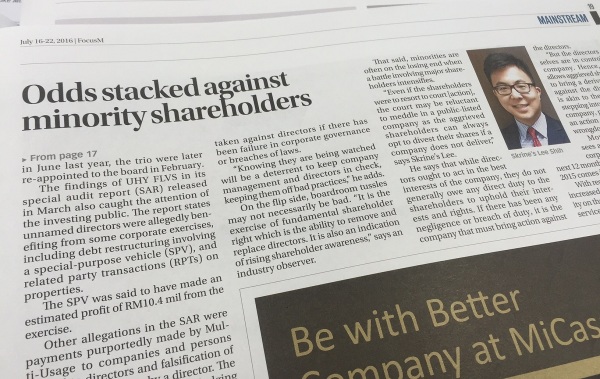An article analysing the multiple derivative action where a shareholder of a holding company can possibly file an action on behalf of a subsidiary of that holding company.
Where a wrong has been carried out against a company, the rule in Foss v Harbottle provides that the company itself must bring an action and not the shareholder of the company. An aggrieved shareholder may be left powerless in the face of wrongdoing by the majority.
The common law then carved out an exception for a shareholder to bring an action on behalf of the company where the company itself is unable to do so. This is allowed where a wrong is committed against the company and at the same time, the wrongdoers are in control of the company. This is known as a ‘fraud on the minority’ as the wrongdoers are able to prevent the company from taking action against them. In these circumstances, a derivative action by the shareholder on behalf of the company is allowed.

Certain jurisdictions have also extended the derivative action to allow a shareholder of a parent company to bring an action on behalf of a subsidiary of that parent company. Such an action has been termed as a multiple derivative action.
The ability to bring a multiple derivative action is extremely pertinent in today’s world, where businesses can be and are often structured into a multi-tiered group of companies and subsidiaries. Shareholders may invest in the investment holding company, with the actual businesses being run and assets held by the first-tier or second-tier subsidiaries further down the corporate structure.
Lord Millet, writing extra-judicially in Multiple Derivative Actions, Gore-Browne bulletin July 2010, succinctly describes the consequences if the situation were otherwise:
“The moral for would be fraudsters is simple; choose [a] company, and be careful to defraud its subsidiary and not the company itself.”
We will discuss the availability of the multiple derivative action in various jurisdictions and the application of these cases in Malaysia. Continue reading →



